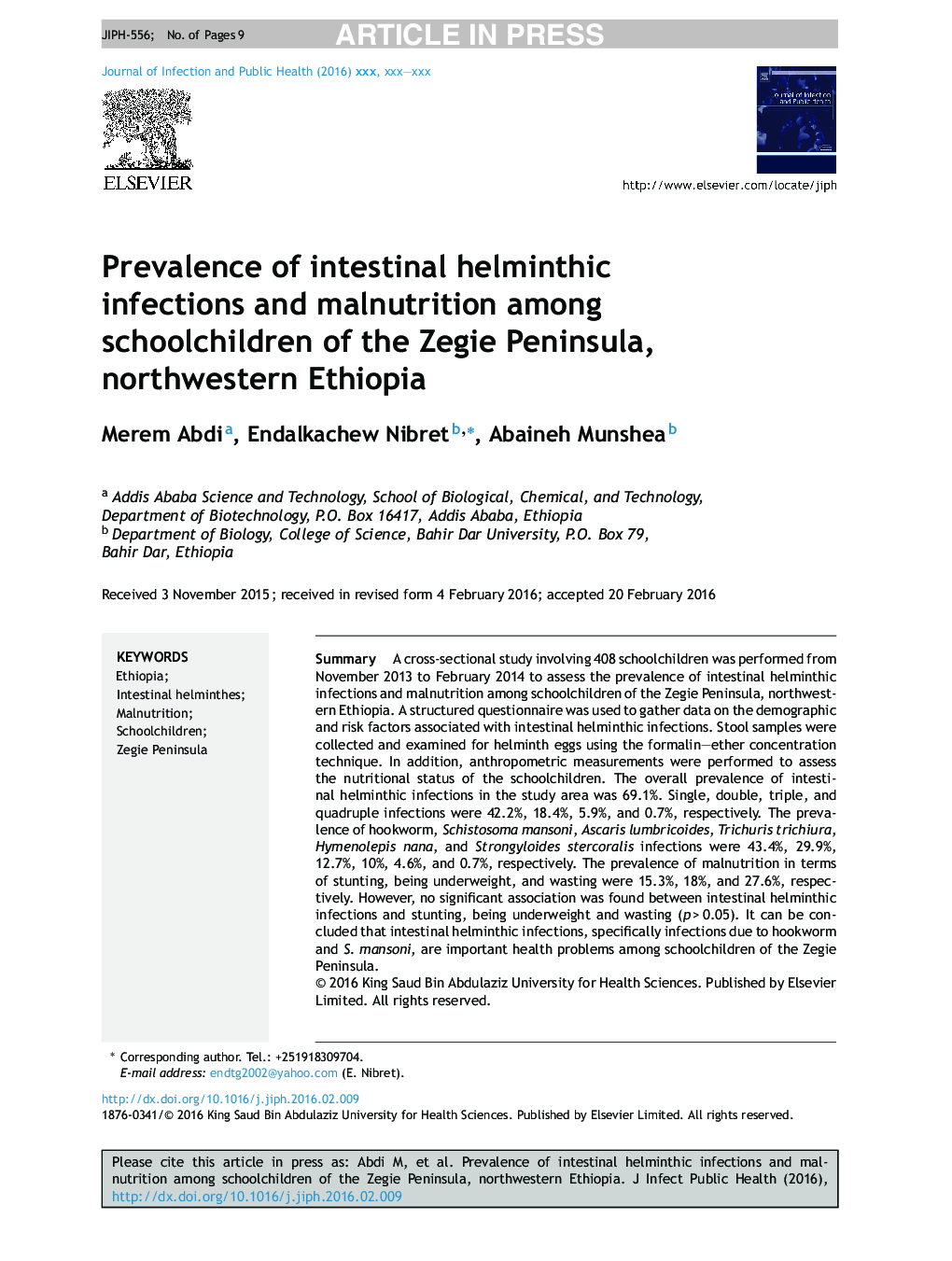| Article ID | Journal | Published Year | Pages | File Type |
|---|---|---|---|---|
| 5672825 | Journal of Infection and Public Health | 2017 | 9 Pages |
Abstract
A cross-sectional study involving 408 schoolchildren was performed from November 2013 to February 2014 to assess the prevalence of intestinal helminthic infections and malnutrition among schoolchildren of the Zegie Peninsula, northwestern Ethiopia. A structured questionnaire was used to gather data on the demographic and risk factors associated with intestinal helminthic infections. Stool samples were collected and examined for helminth eggs using the formalin-ether concentration technique. In addition, anthropometric measurements were performed to assess the nutritional status of the schoolchildren. The overall prevalence of intestinal helminthic infections in the study area was 69.1%. Single, double, triple, and quadruple infections were 42.2%, 18.4%, 5.9%, and 0.7%, respectively. The prevalence of hookworm, Schistosoma mansoni, Ascaris lumbricoides, Trichuris trichiura, Hymenolepis nana, and Strongyloides stercoralis infections were 43.4%, 29.9%, 12.7%, 10%, 4.6%, and 0.7%, respectively. The prevalence of malnutrition in terms of stunting, being underweight, and wasting were 15.3%, 18%, and 27.6%, respectively. However, no significant association was found between intestinal helminthic infections and stunting, being underweight and wasting (p > 0.05). It can be concluded that intestinal helminthic infections, specifically infections due to hookworm and S. mansoni, are important health problems among schoolchildren of the Zegie Peninsula.
Keywords
Related Topics
Health Sciences
Medicine and Dentistry
Infectious Diseases
Authors
Merem Abdi, Endalkachew Nibret, Abaineh Munshea,
